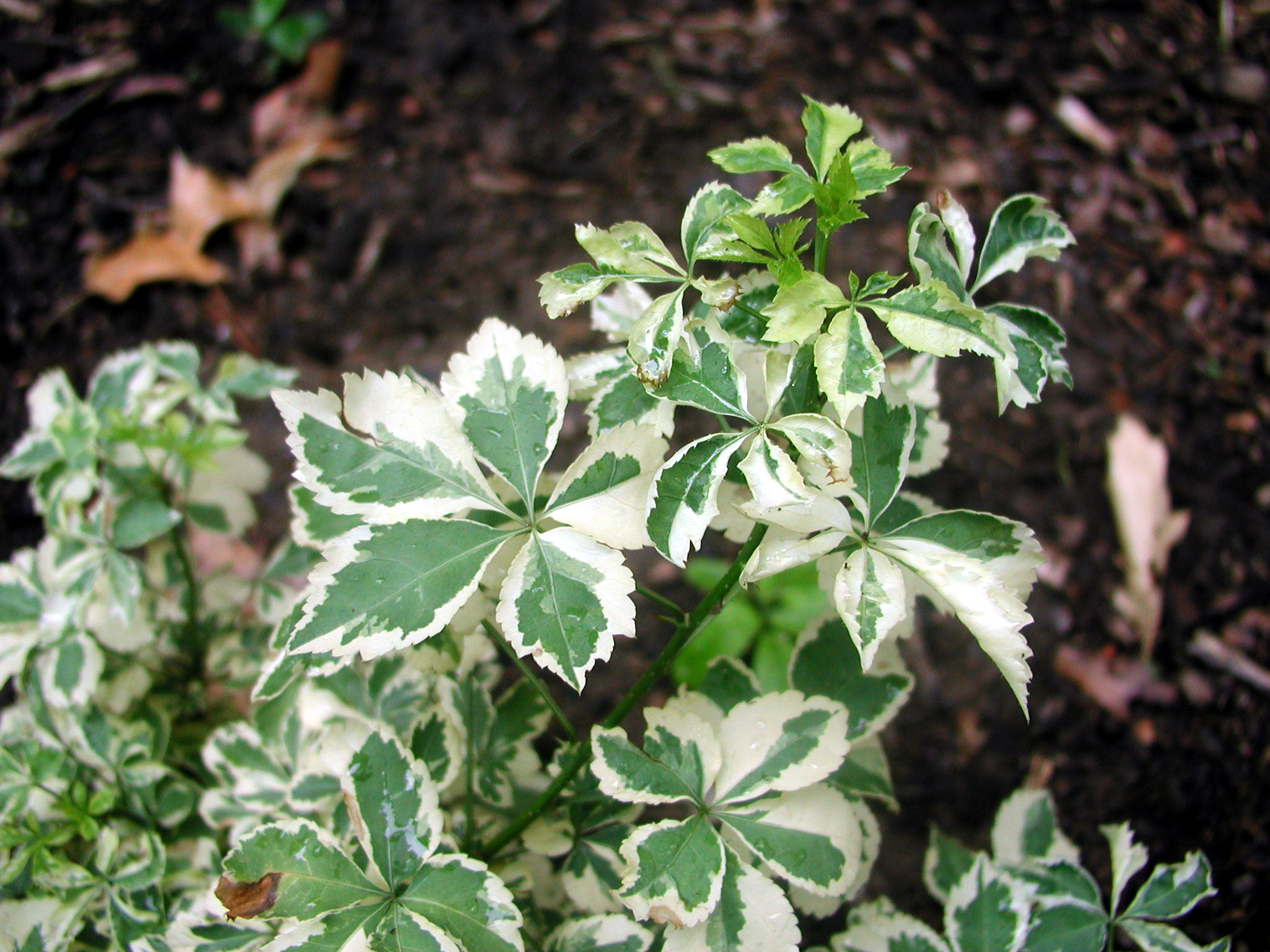Resource Library
Plant of the Week: Eleutherococcus sieboldianus ‘Variegata’, Acanthopanax, Fiveleaf Aralia
Eleutherococcus sieboldianus ‘Variegata’, Acanthopanax, Fiveleaf Aralia -- The variegated acanthopanax is a colorful deciduous shrub for use in dry shade. (Image courtesy Gerald Klingaman)
Download High Resolution
In August shade in the garden is much appreciated. But shade means tree roots, fierce competition for water and difficult growing conditions. Finding plants to grow in this kind of competitive environment is a constant challenge for gardeners. In the shrub category, acanthopanax (Eleutherococcus sieboldianus ‘Variegata’) will work and might be worth considering for such challenging conditions.
Acanthopanax or fiveleaf aralia is a member of the aralia family and one of about 40 species of woody shrubs or small trees scattered in Asia from Korea to Vietnam and into the Philippines. This species is native to Japan.
Variegated acanthopanax grows as a 6-foot-tall (and wide) deciduous shrub from a slowly expanding, low-branched crown. The stems, when cut, have a significant pith and want to grow long and unbranched, giving older plants a somewhat floppy appearance. Though the natural habit of the plant is to have long branches cloaked in leaves, it tolerates shearing well and is often used as a hedge plant. Stems are warty with one or two quarter-inch-long, downward-pointed spines at the base of each leaf or node.
The leaves are arranged alternately up the stem and are palmately compound with five leaflets. The whorl of leaflets is 3 to 4 inches across. In the ‘Variegata’ form a wide white band surrounds each leaflet. The color is brightest in the spring but persists through the growing season which begins in mid April and persists until the first hard freeze of autumn. The chimera is somewhat unstable so pruning to remove green or albino branches will occasionally be required.
Fiveleaf aralia is a dioecious plant with either male or female individuals. The variegated form does not seem to set seed even though it is thought to be a female plant. Seed grown green leaf forms are occasional offered as tough hedge plants, so inch diameter clusters of pea sized black berries borne at the ends of branches might be encountered.
Acanthopanax is a shrub with an identity crisis. It has had more than its share of name changes with acanthopanax, which means “thorny ginseng”, being one of its old Latin names. The name Eleutherococcus was coined by Russian botanist Carl Maximovich in 1859 and was the first to be published in the scientific literature so it has precedence in the naming game. The name translates from botanical Latin as “free carpels”, a minute technical detail about the way the seeds are arranged inside the berry. The species epitaph commemorates Philipp von Siebold (1796 – 1866), a German physician who had a storied life in Japan where he collected many important garden plants before being banned as a spy for attempting to ship home some maps of the island nation.
I’ve grown this variegated plant in my shade garden for more than a decade but it has only impressed me with its toughness, not its ability to grow and thrive. But three year old plants in better soil with only partial shade have made a handsome showing in short order and show the true potential of the plant. It seems to grow in about any soil type and will tolerate extreme deprivation, but if the goal is to have it look good, some care will be needed.
Acanthopanax will grow in full sun or medium shade but it is less happy in heavy shade. I differentiate between these three conditions by watching where grass will grow. In full sun grasses grow, and bermudagrass is aggressive, tending to take over; in partial shade, grasses grow but bermudagrass will not grow; in full shade no grasses will grow.
To keep the plant from flopping about, cut it back in the spring before new growth begins and then periodically during the season to head back especially vigorous shoots.
For more information about horticulture or to see other Plant of the Week columns, visit Extension's Web site, www.uaex.uada.edu, or contact your county extension agent. The Cooperative Extension Service is part of the U of A Division of Agriculture.
Pursuant to 7 CFR § 15.3, the University of Arkansas System Division of Agriculture offers all its Extension and Research programs and services (including employment) without regard to race, color, sex, national origin, religion, age, disability, marital or veteran status, genetic information, sexual preference, pregnancy or any other legally protected status, and is an equal opportunity institution.
